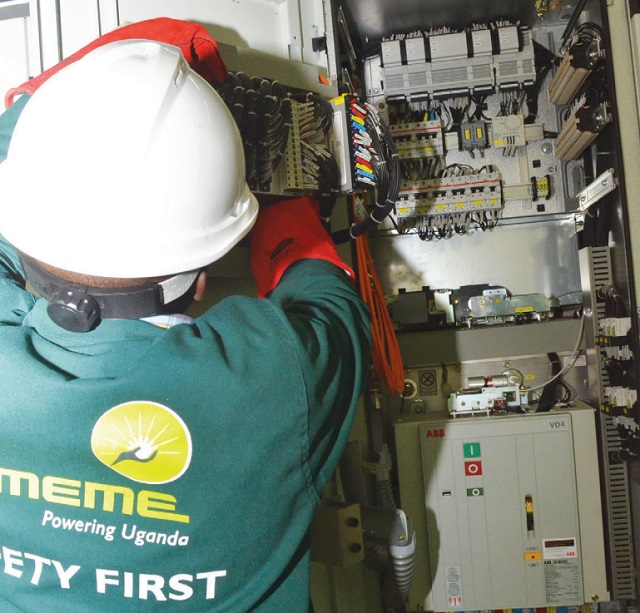
Winning the war of tariff affordability and losing the war of sustainability of electricity sub-sector
COMMMENT | HARRISON MUTIKANGA | A decade after Andrew Mwenda’s article, “Electricity cost going up 40%: but who benefits most from subsidies to UMEME?” in the Independent (Issue No.196 January 13-19, 2012), the details of electricity pricing, subsidy policies, and their ramifications remain a concern.
Mwenda’s call to remove subsidies, deeming them economically unsustainable and favouring the rich at the expense of the poor, sets the stage for a deeper investigation into Uganda’s electricity pricing policy. Globally, the mystery of utility pricing, especially for electricity, remains a pressing issue.
Electricity pricing is a powerful regulatory tool used to balance multiple but often conflicting policy objectives. On one hand lies the imperative to ensure the reliability and sustainability of service delivery through full cost recovery tariffs, on the other hand, is the need to maintain the affordability of services through lower tariffs, a crucial consideration in many developing nations. Consequently, the sad reality is that tariffs, especially for electricity state-owned companies (SOCs), often fall short of full cost recovery.
In Uganda, SOCs (UEGCL, UETCL, and UEDCL) find themselves vulnerable due to the assumption that the government will consistently provide subsidies. The distinction between electricity as a paid-for service and a public service further complicates the determination of the scope and necessity of subsidies. Consequently, these SOCs have become overly reliant on government support for sustainability, an unsustainable predicament given competing needs across various government sectors. According to the World Bank, a utility is financially sustainable over the long run when all costs (operation and maintenance, debt obligations, taxes, capital costs) are fully recovered from payments by consumers.
Uganda’s Energy Policy 2023 highlights the following policy objectives and 2040 targets among others: increasing electricity generation to 52,481 MW, increasing on-grid access to 80%, increasing electricity consumption to 3,668 kWh per capita, improving supply reliability, attracting investment with financial sustainability, and affordability through tariff reduction. Achieving these targets will require substantial investments in the subsector such as US$245 billion required to increase generation capacity. The million-dollar question is: where will this money come from?
One of the Electricity Regulatory Authority (ERA)’s performance targets for FY 2022/23 was to reduce the weighted average end-user electricity tariff by 4% from Shs460 in 2021/22 (FY2021/22 ERA Annual Report). Indeed, the end-user tariff schedule issued by ERA for the fourth quarter of 2023 shows tariff reduction for all consumer categories with the highest reduction of 12.8% for commercial users (New Vision, October 23, 2023). This indicates that the priority is affordability through tariff reduction over other subsector policy objectives. However, pursuing a tariff reduction policy only is self-defeating considering other government policy objectives of increasing electricity generation capacity and access, enhancing reliability, and attaining sector financial sustainability among others, which may require a tariff increase. In 2012 the average end-user tariff increased by 46% when the government reduced the subsidies after careful and long-term analysis of the financial status of the sub-sector to enable the sub-sector to return to a break-even path (ERA Annual Report 2012/13).
The main reasons for Government subsidies to the electricity subsector are two-fold: making electricity affordable and attracting investments. To reduce the cost of doing business in Uganda, the President has often announced that the price of electricity for manufacturers and/or industrialists should not exceed 5 US cents per kWh (unit). Whereas the President has good intentions for the electricity subsector, the tariff of 5 US cents per kWh for industries is below the cost of service and requires to be subsidised. Shortfalls in subsidies imply that the quality of service; especially supply reliability is compromised, which to many manufacturers is more important than the tariff subsidy. Suleman Charaniya, the Manager of Kigezi Industries in Kabale which employs 200 people, for instance, is willing to pay more for reliable electricity supply as the power supply in Kabale Municipality is unreliable and crippling businesses like in most other areas upcountry (Daily Monitor, November 20, 2023).
A pilot study executed in the Kapeeka and Buikwe industrial parks to incentivise industries to consume more electricity and benefit from the low tariff of US cents 5/kWh was not successful as industries did not increase their consumption and output. This therefore is an indicator that electricity is probably not the major cost driver for most industries. There is need for a study to determine the cost drivers of manufacturing firms and Industries to guide policy makers on how best to support the manufacturing sector.
Furthermore, the objective of the subsidies to make electricity affordable for the poor while fulfilling the President’s good intentions of attracting and keeping industries competitive has not been fully attained. For example, affluent commercial apartments, hotels, hostels, telecommunication firms, and commercial banks which make huge annual profits are all benefiting from the industrial subsidy while they could actually afford to pay a full cost recovery tariff.
This means that domestic users and other commercial users are paying more than they should compared to these companies. Moreover, the burden of these subsidies is predominantly borne by the SOCs through tariffs that are not full cost recovery and underinvestment in the subsector that leads to operational inefficiencies and perpetuates power outages. However, the private electricity companies are sustainable and profitable because they are able to charge full cost recovery tariffs. Therefore, tariff and subsidy reforms are necessary to fully meet the revenue requirements for SOCs, make them financially sustainable and reduce the fiscal burden on the National budget.
Evidently, the electricity subsector is financially unsustainable and the following tariff reforms are suggested. First, the removal of the electricity generation tariff subsidy in favour of full cost recovery tariffs. Secondly, removal of blanket subsidies for industrial consumers and only consider those who need them most based on a well-established eligibility criterion.
Increased SOC revenues will make the SOCs financially sustainable and guarantee delivery of the energy policy objectives. Policymakers must therefore decisively redirect resources from the battle of tariff affordability towards securing victory in the enduring war for the long-term financial sustainability of the electricity sub-sector.
*****

Dr. Eng. Harrison E. Mutikanga is Chief Executive Officer Uganda Electricity Generation Company Limited (UEGCL)
 The Independent Uganda: You get the Truth we Pay the Price
The Independent Uganda: You get the Truth we Pay the Price


